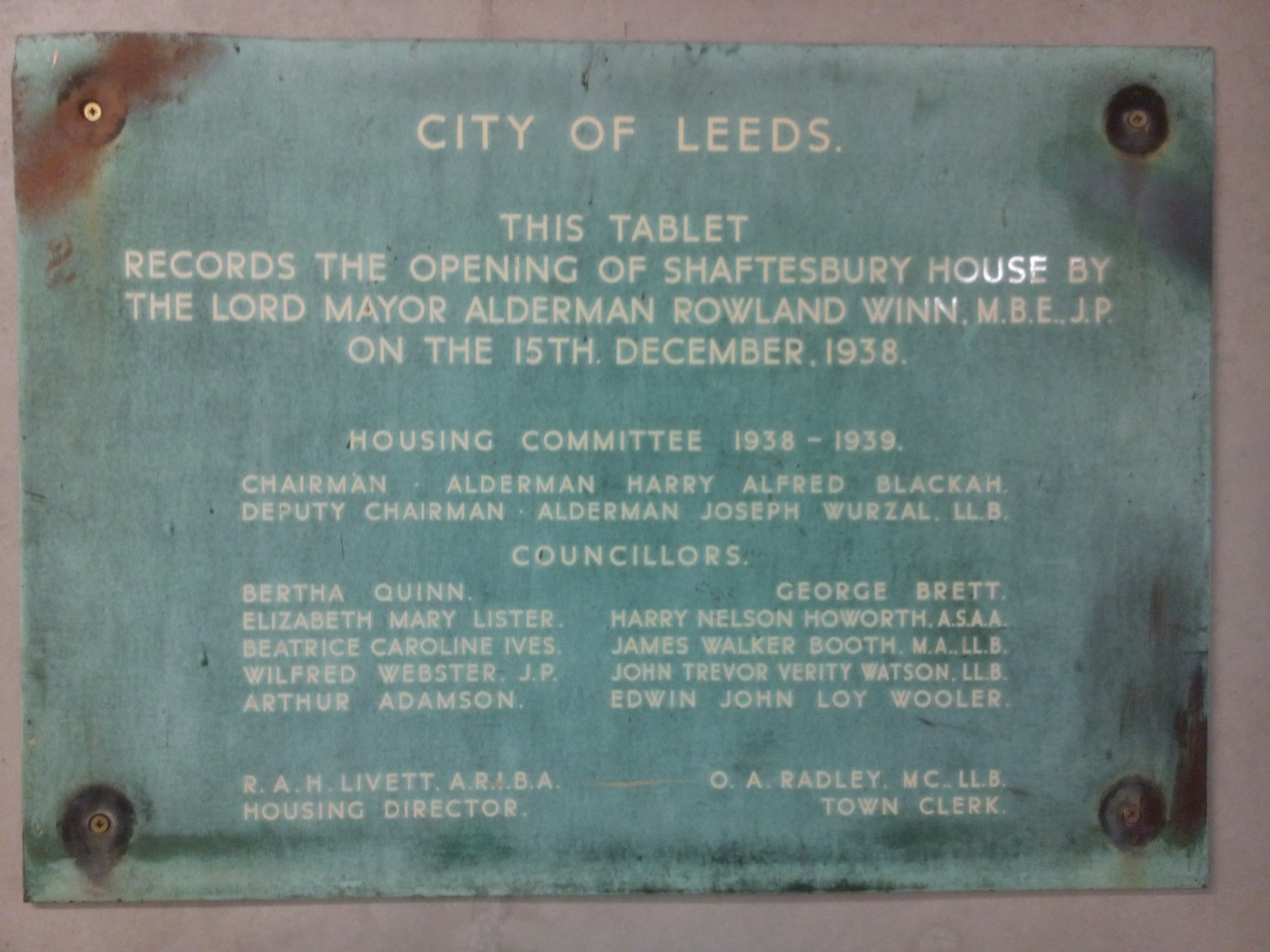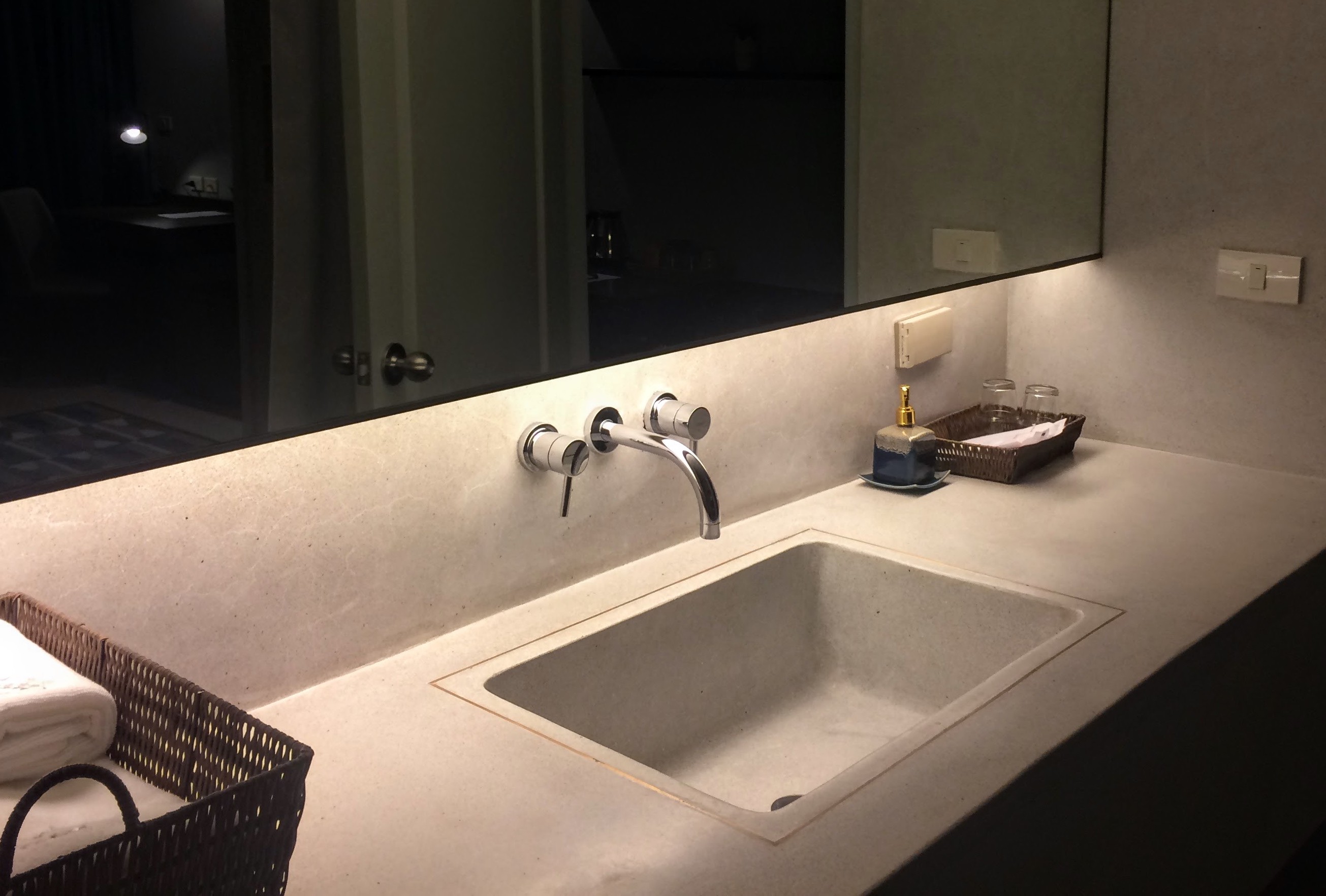|
R. A. H. Livett
Richard Alfred Hardwick Livett (1898–1959), known as R.A.H. Livett, was an architect and pioneer of modernist social housing. Early life Livett was born at 59 Sistova Road, Balham, London in early 1898, the only son of undertaker and valuer Harry Clayton Livett (1863–1936) and his wife Ada Hardwick, who had married in Edmonton in 1893. He trained as an architect at the Architectural Association in London before working for a number of private firms; for while, he was employed as an assistant by Paul and Michael Waterhouse. He later served as Chief Housing Assistant to TC Howitt in Nottingham. In June 1928 he married Violet Lauretta Victoria Bennett (1900–82) in Barnet, London. They had at two children, David Buteux Livett (1929–2003) and Jill H Livett (b.1933). Career In around 1930 he moved to Manchester and became Deputy Housing Director to Leonard Heywood. Here he designed the initial part of Wythenshawe, the Dewsbury Estate and Manchester's first major p ... [...More Info...] [...Related Items...] OR: [Wikipedia] [Google] [Baidu] |
Architect
An architect is a person who plans, designs and oversees the construction of buildings. To practice architecture means to provide services in connection with the design of buildings and the space within the site surrounding the buildings that have human occupancy or use as their principal purpose. Etymologically, the term architect derives from the Latin ''architectus'', which derives from the Greek (''arkhi-'', chief + ''tekton'', builder), i.e., chief builder. The professional requirements for architects vary from place to place. An architect's decisions affect public safety, and thus the architect must undergo specialized training consisting of advanced education and a ''practicum'' (or internship) for practical experience to earn a Occupational licensing, license to practice architecture. Practical, technical, and academic requirements for becoming an architect vary by jurisdiction, though the formal study of architecture in academic institutions has played a pivotal role in ... [...More Info...] [...Related Items...] OR: [Wikipedia] [Google] [Baidu] |
Quarry Hill Estate
A quarry is a type of open-pit mine in which dimension stone, rock, construction aggregate, riprap, sand, gravel, or slate is excavated from the ground. The operation of quarries is regulated in some jurisdictions to reduce their environmental impact. The word ''quarry'' can also include the underground quarrying for stone, such as Bath stone. Types of rock Types of rock extracted from quarries include: * Chalk * China clay * Cinder * Clay * Coal *Construction aggregate ( sand and gravel) *Coquina *Diabase * Gabbro * Granite *Gritstone * Gypsum * Limestone * Marble * Ores * Phosphate rock * Quartz * Sandstone *Slate * Travertine Stone quarry Stone quarry is an outdated term for mining construction rocks (limestone, marble, granite, sandstone, etc.). There are open types (called quarries, or open-pit mines) and closed types ( mines and caves). For thousands of years, only hand tools had been used in quarries. In the 18th century, the use of drilling and blastin ... [...More Info...] [...Related Items...] OR: [Wikipedia] [Google] [Baidu] |
Greenhouse (Leeds)
Greenhouse is an eight-storey, mixed-use block of eco-flats in Beeston, Leeds. The building took its present form in 2010, after renovation of a 1938 development, Shaftesbury House. As Shaftesbury House, the building was noted for its technologically innovative, modernist housing of migrant workers. As Greenhouse, it has been noted for an approach to promoting ecological and social sustainability far ahead of most of the UK building industry. Shaftesbury House In the wake of the Great Depression, Leeds was host to large numbers of migrant workers, who were frequently housed in appalling conditions. A programme of Slum clearance in the United Kingdom, slum clearance, partly driven by the Housing Act 1930 and led particularly by Charles Jenkinson (reverend), Charles Jenkinson, followed, described by the historian Alison Ravetz as 'a heroic age of Leeds history' and fiercely opposed by the Conservative Party (UK), Conservative Party. Leeds City Council created the Leeds Model Lodgi ... [...More Info...] [...Related Items...] OR: [Wikipedia] [Google] [Baidu] |
Citu
CITU may stand for: * Cebu Institute of Technology – University, educational institution in the Philippines * Centre for Islamic Thought and Understanding (CITU), academic centre for Universiti Teknologi MARA, Malaysia * The Centre of Indian Trade Unions Centre of Indian Trade Unions, CITU is a National level Trade Union in India and its trade union wing is a spearhead of the Indian Trade Union Movement. The Centre of Indian Trade Unions is today one of biggest assemblies of workers and classe ... * CITU (Création Interactive Transdisciplinaire Universitaire) Lab, university laboratory for arts and new media of University of Paris VIII, France {{disambiguation ... [...More Info...] [...Related Items...] OR: [Wikipedia] [Google] [Baidu] |
Beeston, Leeds
Beeston is a suburb of Leeds, West Yorkshire, England located on a hill about 2 miles (3 km) south of the city centre. The origins of Beeston can be traced back to the medieval period. It remained a small settlement until the latter part of the Victorian era when it became a primarily residential area for people working in Leeds and surrounding industrial areas like Holbeck and Hunslet. At the time of the 2011 Census, Beeston had a population of 22,187 (which included Holbeck). Some parts of the area, around Cross Flatts Park, suffer from relatively high levels of deprivation, while areas to the centre and south are generally considered more affluent. Beeston is home to the Leeds United football club stadium on Elland Road and Hunslet rugby league club. Etymology The name ''Beeston'' is first attested in the Domesday Book, in the form ''Bestone''. The name seems to come from Old English *''bēos'' 'bent-grass' (L. Agrostis) and ''tūn'' 'estate, village'. Thus it once m ... [...More Info...] [...Related Items...] OR: [Wikipedia] [Google] [Baidu] |
Shaftesbury House
Greenhouse is an eight-storey, mixed-use block of eco-flats in Beeston, Leeds. The building took its present form in 2010, after renovation of a 1938 development, Shaftesbury House. As Shaftesbury House, the building was noted for its technologically innovative, modernist housing of migrant workers. As Greenhouse, it has been noted for an approach to promoting ecological and social sustainability far ahead of most of the UK building industry. Shaftesbury House In the wake of the Great Depression, Leeds was host to large numbers of migrant workers, who were frequently housed in appalling conditions. A programme of slum clearance, partly driven by the Housing Act 1930 and led particularly by Charles Jenkinson, followed, described by the historian Alison Ravetz as 'a heroic age of Leeds history' and fiercely opposed by the Conservative Party. Leeds City Council created the Leeds Model Lodging House in an old dyeworks in 1932, and then created the Shaftesbury House Municipal Ho ... [...More Info...] [...Related Items...] OR: [Wikipedia] [Google] [Baidu] |
Edinburgh
Edinburgh ( ; gd, Dùn Èideann ) is the capital city of Scotland and one of its 32 Council areas of Scotland, council areas. Historically part of the county of Midlothian (interchangeably Edinburghshire before 1921), it is located in Lothian on the southern shore of the Firth of Forth. Edinburgh is Scotland's List of towns and cities in Scotland by population, second-most populous city, after Glasgow, and the List of cities in the United Kingdom, seventh-most populous city in the United Kingdom. Recognised as the capital of Scotland since at least the 15th century, Edinburgh is the seat of the Scottish Government, the Scottish Parliament and the Courts of Scotland, highest courts in Scotland. The city's Holyrood Palace, Palace of Holyroodhouse is the official residence of the Monarchy of the United Kingdom, British monarchy in Scotland. The city has long been a centre of education, particularly in the fields of medicine, Scots law, Scottish law, literature, philosophy, the sc ... [...More Info...] [...Related Items...] OR: [Wikipedia] [Google] [Baidu] |
George Clark Robb
George may refer to: People * George (given name) * George (surname) * George (singer), American-Canadian singer George Nozuka, known by the mononym George * George Washington, First President of the United States * George W. Bush, 43rd President of the United States * George H. W. Bush, 41st President of the United States * George V, King of Great Britain, Ireland, the British Dominions and Emperor of India from 1910-1936 * George VI, King of Great Britain, Ireland, the British Dominions and Emperor of India from 1936-1952 * Prince George of Wales * George Papagheorghe also known as Jorge / GEØRGE * George, stage name of Giorgio Moroder * George Harrison, an English musician and singer-songwriter Places South Africa * George, Western Cape ** George Airport United States * George, Iowa * George, Missouri * George, Washington * George County, Mississippi * George Air Force Base, a former U.S. Air Force base located in California Characters * George (Peppa Pig), a 2-y ... [...More Info...] [...Related Items...] OR: [Wikipedia] [Google] [Baidu] |
Sink
A sink is a bowl-shaped plumbing fixture for washing hands, dishwashing, and other purposes. Sinks have a tap (faucet) that supply hot and cold water and may include a spray feature to be used for faster rinsing. They also include a drain to remove used water; this drain may itself include a strainer and/or shut-off device and an overflow-prevention device. Sinks may also have an integrated soap dispenser. Many sinks, especially in kitchens, are installed adjacent to or inside a counter. When a sink becomes clogged, a person will often resort to using a chemical drain cleaner or a plunger, though most professional plumbers will remove the clog with a ''drain auger'' (often called a "plumber's snake"). History United States The washstand was a bathroom sink made in the United States in the late 18th century.Sinks ''The Old-House Journal''; Augu ... [...More Info...] [...Related Items...] OR: [Wikipedia] [Google] [Baidu] |
Garchey
The Garchey System was an early refuse disposal system in the United Kingdom. Devised by Louis Garchey, a Frenchman, it was first installed in blocks of flats in France during the 1930s.The Garchey story (On ''Barbican Living'', accessed: 5 September 2017) It was first used in the UK in 1935 after the City of Leeds installed it in one of its housing blocks. A British firm holds the UK rights. Similar systems were installed in various buildings during the 1950s, 1960s and 1970s. A more sophisticated system was installed in London's in the 1960s and 1970s. Methodology The disposal system is distinguished for its w ...[...More Info...] [...Related Items...] OR: [Wikipedia] [Google] [Baidu] |
Drancy
Drancy () is a commune in the northeastern suburbs of Paris in the Seine-Saint-Denis department in northern France. It is located 10.8 km (6.7 mi) from the center of Paris. History Toponymy The name Drancy comes from Medieval Latin ''Derenciacum'', and before that ''Terentiacum'', meaning "estate of Terentius", a Gallo-Roman landowner. Origins to 20th century In the 17th century, Drancy was divided into two distinct villages: Drancy le Grand and le Petit Drancy. The quarter "Village Parisien" is built on the old location of the hamlet of Groslay which was surrounded by the forest of Bondy—hence the name of rue des Bois de Groslay. The end of nineteenth century was marked by the industrialisation and by the development of rail transports. During the Franco-Prussian war, Le Bourget was the site of an important battle and the castle of Ladoucette in Drancy was destroyed. 20th and 21st centuries During World War II, Drancy was the site of the Drancy internm ... [...More Info...] [...Related Items...] OR: [Wikipedia] [Google] [Baidu] |
Cité De La Muette
Drancy internment camp was an assembly and detention camp for confining Jews who were later deported to the extermination camps during the German occupation of France during World War II. Originally conceived and built as a modernist urban community under the name ''La Cité de la Muette'', it was located in Drancy, a northeastern suburb of Paris, France. Between 22 June 1942 and 31 July 1944, during its use as an internment camp, 67,400 French, Polish, and German Jews were deported from the camp in 64 rail transports, The 61,000 deported to Auschwitz and remaining number to Sobibor were murdered. which included 6,000 children. Only 1,542 prisoners remained alive at the camp when the German authorities in Drancy fled as Allied forces advanced and the Swedish Consul-General Raoul Nordling took control of the camp on 17 August 1944, before handing it over to the French Red Cross to care for the survivors. Drancy was under the control of the French police until 1943 when a ... [...More Info...] [...Related Items...] OR: [Wikipedia] [Google] [Baidu] |









